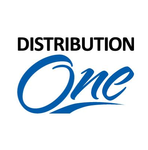What Is Integrated Distribution System?
An Integrated Distribution System (IDS) is a software package that streamlines and optimizes the distribution and supply chain management processes. It combines inventory management, order processing, shipping and tracking, and warehouse management into a single integrated system.
This means that organizations who rely on distribution, ranging from small businesses to major corporations, will have greater control and visibility over their entire supply chain. Companies using an IDS can precisely monitor inventory levels, track orders and shipments in real time, and reduce errors and delays in the distribution process. One of the primary advantages of an IDS is its ability to increase efficiency while lowering expenses.
By automating and centralizing tasks, the system eliminates the need for human data entry and lowers the chance of error. This leads to faster and more accurate order processing, which increases customer satisfaction. Another benefit of an IDS is its capacity to deliver useful insights and data analytics. With all distribution data in one place, businesses can examine trends and patterns to make informed decisions.
This assists in optimizing inventory levels, identifying areas for improvement, and forecasting future demand. A key feature of an IDS is easy connection with other systems, like as accounting and CRM software. This promotes seamless data flow while saving time and effort in manual data entering. When selecting an IDS for your organization, it is critical to consider scalability, user-friendliness, and customer support. Look for a system that can expand with your organization and is simple to use for your team. Furthermore, confirm that the provider delivers dependable customer service for any technical concerns.
What Are The Recent Trends In Integrated Distribution System?
In recent years, businesses from a variety of industries have increased their use of integrated distribution systems. This is mostly due to the growing need for efficient and cost-effective distribution processes. Keeping up with shifting market trends, producers of integrated distribution systems are always developing and providing new features to fulfill their clients' expanding needs.
In this buyer's guide, we'll go over some of the latest trends in integrated distribution systems that you should bear in mind when making a buying decision.
1. Real-Time Tracking And Visibility: One of the primary developments in integrated distribution systems is the incorporation of real-time tracking and visibility capabilities. Advanced technology such as RFID and GPS enable businesses to track their inventory, orders, and shipments in real time. This enables better planning and optimization of the distribution process, resulting in increased efficiency and lower costs.
2. Automation And Artificial Intelligence: The market for integrated distribution systems is also seeing an increase in the usage of automation and artificial intelligence (AI). These technologies allow processes such as order processing, inventory management, and picking and packaging to be automated, decreasing the possibility of human error and speeding up the distribution process.
3. Cloud-Based Integration: Cloud-based integration is a new trend in the integrated distribution systems industry. Businesses that use cloud-based solutions can gain real-time access to data, communicate with partners, and manage their distribution network more effectively. This also improves scalability and flexibility by allowing firms to simply add or delete warehouses or distribution locations as needed.
4. Mobile Applications: As the popularity of smartphones and tablets has grown, integrated distribution system vendors have begun to offer mobile applications that enable organizations to manage their distribution operations while on the go. These programs offer real-time updates and notifications, allowing organizations to make quick, educated decisions.
5. Sustainability: Many organizations now prioritize sustainability, and this trend has spread to the integrated distribution system industry. Many manufacturers are already adopting sustainable practices into their operations, such as using renewable energy sources in warehouses or producing eco-friendly packaging materials, in response to the growing demand for sustainable solutions.
Benefits Of Using Integrated Distribution System
An integrated distribution system (IDS) is a technology-based solution that incorporates numerous supply chain components and operations, including inventory management and order fulfillment. It attempts to increase productivity, accuracy, and visibility in the distribution process, making it a worthwhile investment for enterprises.
Here are the main advantages of utilizing an integrated distribution system.
1. Streamlined Operations: One of the primary advantages of an integrated distribution system is the streamlining of operations. Businesses can limit the chance of errors by merging services like inventory management, order processing, and shipping tracking. This leads to better production, lower costs, and faster order processing, which improves customer satisfaction.
2. Real-Time Visibility: An integrated distribution system allows firms to have real-time visibility into their distribution activities. This covers inventory control, sales monitoring, and shipment management. This enables better in-stock availability, fewer stockouts, and improved forecasting capabilities, resulting in more sales and a stronger bottom line.
3. Centralized Data Management: By unifying data from many departments and processes, an integrated distribution system allows firms to handle data centrally. This results in more accurate and reliable data insights, which enable improved decision-making and strategic planning. Managers can also access crucial information about inventory levels, orders, and delivery statuses in one spot, which improves team productivity and collaboration.
4. Improved Inventory Management: Businesses benefit from efficient inventory management, which is made easier by an integrated distribution system. Businesses can use real-time data and automated procedures to better track and manage inventory levels, eliminating overstocking and stockouts. This leads to a more efficient supply chain, cost savings, and better customer service.
5. Improved Customer Experience: With the development of e-commerce, clients increasingly want faster and more accurate order processing and delivery. Businesses may satisfy these needs by using an integrated distribution system, which provides real-time order tracking, precise inventory information, and on-time deliveries. This increases client satisfaction and loyalty, giving organizations a competitive advantage.
Important Factors To Consider While Purchasing Integrated Distribution System?
Integrated Distribution Systems (IDS) are critical tools for controlling and optimizing supply chain processes. Investing in the appropriate IDS can help organizations streamline operations, improve efficiency, and reduce expenses. However, with so many alternatives on the market, it can be difficult for consumers to choose the ideal IDS for their business needs.
Here are the key elements that purchasers should consider when acquiring an Integrated Distribution System.
1. Business Needs And Objectives: The first and most important factor when choosing an IDS is understanding your company's needs and objectives. This will assist you in determining the precise features and functionalities that your IDS should include. For example, if you require real-time inventory tracking, be sure the IDS you select has that functionality.
2. Compatibility And Integration: Another essential consideration is the IDS's compatibility and integration with your existing systems. A smooth integration of the IDS with your ERP, WMS, and other systems is required for effective and reliable data flow. It also eliminates the need for manual data entry, which saves time and decreases errors.
3. Scalability: It is critical to select an IDS that can grow with your business. A scalable IDS ensures that it can handle a rising volume of orders, inventory, and other data as your company grows. It will spare you the headache of regularly changing your IDS, resulting in long-term savings of money and work.
4. Usability: Your staff should find an IDS straightforward to use and navigate. It should have a simple interface that requires little training to utilize. This will facilitate speedier adoption and shorten the learning curve for employees, resulting in higher production.
5. Cost: Cost is an important consideration in any company choice. When purchasing an IDS, it is critical to evaluate both the upfront and long-term costs, which include maintenance and support fees. It is recommended that you compare pricing from many vendors and evaluate the value each IDS adds to your organization.
6. Customer Support: Technical issues might arise at any time and disrupt your business operations. As a result, it is critical to purchase an IDS from a vendor that provides dependable and timely customer service. Before you make a purchasing decision, consider the vendor's track record of providing timely and effective assistance.
7. Security: Because IDS handles a large volume of sensitive corporate data, security should be a high consideration. Look for an IDS that includes strong security features like data encryption, authentication, and access restriction. This ensures the security of your company's important data.
What Are The Key Features To Look For In Integrated Distribution System?
An Integrated Distribution System (IDS) is a comprehensive software system that streamlines and automates the inventory, order, and distribution management processes for enterprises. Investing in an IDS can increase efficiency, accuracy, and customer happiness. However, with so many alternatives on the market, selecting the perfect IDS can be intimidating.
To assist you in making an informed decision, below are the important qualities to look for in an integrated distribution system:
1. Inventories Management: The fundamental role of an IDS is to manage inventories efficiently. Look for features like real-time inventory tracking, automated stock notifications, and stock transfer capabilities to maintain ideal stock levels and prevent stockouts.
2. Order Management: A strong IDS should have extensive order management capabilities to execute orders quickly. Order tracking, automatic order fulfillment, and the capacity to manage numerous sales channels can help boost efficiency and customer satisfaction.
3. Integration With E-commerce Platforms: If you sell things online, you must have an IDS that is compatible with your e-commerce platform. This allows for seamless communication between your online business and the IDS, saving time and lowering the possibility of errors.
4. Warehouse Management: An IDS should have warehouse management features like bin tracking, location management, and barcode scanning to enable efficient and precise order fulfillment.
5. Reporting And Analytics: Access to data is critical for making sound business decisions. Look for an IDS that has extensive reporting and analytics tools for tracking KPIs, identifying trends, and making strategic decisions.
6. Mobile Compatibility: In today's fast-paced corporate world, having access to real-time data on the road is critical. Make sure the IDS you chose is mobile-compatible, so you can control operations from anywhere, at any time.
7. Scalability: As your company expands, your IDS should be able to handle the increased demand without disruption. Look for a system that can handle a large number of orders and data.
8. User-Friendly Interface: A simple and intuitive interface is required for the IDS to be adopted and used effectively. Make sure to select a system that is simple to use and doesn't require lengthy training.
9. Customer Support: If there are any problems or questions, having reliable customer service can make a big difference. Look for an IDS provider with great customer service across several channels.
10. Cost: Finally, examine the cost of the IDS, which includes deployment, maintenance, and any additional expenses. Choose a solution that is both cost-effective and fits your business requirements.
Why Do Businesses Need Integrated Distribution System?
Businesses require an integrated distribution system to streamline their supply chain and increase overall efficiency. This system integrates activities such as inventory management, order fulfillment, and logistics into a single platform, helping firms to better control inventory levels, shorten delivery times, and improve customer satisfaction.
One of the primary advantages of an integrated distribution system is its capacity to optimize inventory levels. Businesses can use real-time data and automated procedures to properly track inventory levels and minimize overstocking or stockouts. This reduces costs while improving cash flow by reducing excess inventory and lost revenues. Furthermore, an integrated distribution system provides greater control and visibility across the entire supply chain process.
With all components integrated, organizations can simply track orders, monitor warehouse activities, and manage shipment and delivery schedules. This not only increases efficiency but also lowers the likelihood of errors and delays. Another benefit of an integrated distribution system is the capacity to manage different sales channels. With the development of e-commerce and omnichannel shopping, firms must be able to fulfill orders from several sources while providing a consistent consumer experience.
An integrated system can seamlessly integrate and efficiently manage orders from various channels, assuring prompt delivery and lowering the chance of errors. Furthermore, an integrated distribution system enables organizations to access real-time data and analytics, giving them vital insights into their supply chain performance. Businesses can use this information to make data-driven decisions about how to optimize their operations and find areas for improvement.
Overall, an integrated distribution system is critical for firms aiming to increase supply chain efficiency, lower costs, and improve customer experience. This technology enables businesses to make wiser and more informed decisions by consolidating various processes onto a single platform and offering real-time data and analytics, resulting in enhanced success and growth.
How Much Time Is Required To Implement Integrated Distribution System?
Implementing an Integrated Distribution System (IDS) is a time-consuming and complex operation. The actual timing for implementing an IDS will vary depending on the buyer's individual needs and requirements, as well as the organization's size and complexity. On average, it takes six months to a year to completely integrate an IDS in an organization.
This covers the time required to select and purchase appropriate IDS software, train staff, and integrate the system with current processes and technology. The first step in deploying an IDS is to thoroughly analyze the current distribution system and find opportunities for improvement. This is followed by assessing various IDS systems and selecting the one that best meets the organization's requirements.
Once the IDS software is chosen, the implementation procedure begins. This includes designing the software to match the organization's unique procedures and processes, as well as teaching personnel on how to use the system efficiently. Integrating the IDS with existing systems, such as warehouse management, inventory control, and transportation management, is a critical step that might take weeks or months depending on the complexity of the systems.
After the integration is complete, the IDS is thoroughly tested to confirm that it is working properly and achieving the organization's goals. Any faults that develop during the testing phase are resolved, and the system is fine-tuned for peak performance. Overall, implementing an IDS can be time-consuming, but the benefits of streamlining distribution procedures, increasing efficiency, and lowering costs make it a good investment for businesses. It is critical to plan and devote adequate time and resources for the successful implementation of an IDS.
What Is The Level Of Customization Available In Integrated Distribution System?
When it comes to investing in an Integrated Distribution System (IDS), consumers are particularly concerned about the level of customization offered. IDS, or Enterprise Resource Planning (ERP) software, is a complete solution that streamlines and automates a variety of distribution activities, including inventory management, order fulfillment, and supply chain management.
Because each organization runs differently and has distinct needs, the flexibility to personalize an IDS is critical for achieving a seamless match. The level of customization allowed by IDS varies per supplier, but in general, IDS provides for a significant degree of flexibility. This means that organizations can modify the system to their specific requirements and procedures.
Some common adjustments include adding or removing features, changing data fields, and generating specific reports and dashboards. One of the key benefits of an IDS is its modular nature, which allows individual modules to be tailored to a company's specific requirements. For example, a company may just need simple inventory management tools at first, but as its business expands, it can add more complicated modules such as warehouse management or demand planning.
In addition to modular modification, IDS allows for flexibility in integration with other systems. Many IDS suppliers provide Application Programming Interfaces (APIs) that enable easy interaction with existing software, resulting in a smooth transition and reducing the need for duplicate data entering. Another aspect to consider is the IDS's user interface.
Customization options for the user interface not only improve the overall user experience, but also boost efficiency and productivity. Businesses can tailor the layout, color scheme, and navigation to meet their employees' needs and tastes. While IDS provides a high level of customization, firms must carefully consider their needs and avoid over-customization. Too much modification can lead to a complex and convoluted system, limiting its efficacy and user acceptance.
Which Industries Can Benefit The Most From Integrated Distribution System?
Integrated Distribution Systems (IDS) have gained popularity in recent years, providing organizations with a more streamlined and efficient way to manage their supply chain activities. While IDS technology can assist a wide range of industries, there are those that stand to benefit the most from its implementation.
We'll look at which industries can benefit the most from an IDS and what critical characteristics to look for when making a purchase.
1. Retail Industry: Retail is a prominent industry that can benefit from an IDS. With the growing popularity of e-commerce, businesses face ongoing pressure to deliver goods faster and at a lower cost. An IDS can assist merchants accomplish this by automating order fulfillment, inventory management, and delivery. This leads to increased productivity, fewer errors, and faster delivery times, ultimately improving the overall customer experience.
2. Manufacturing Industry: In the manufacturing industry, an IDS can be a game changer. With a complex supply chain and various stakeholders, businesses may struggle to manage inventory levels, manufacturing timelines, and fulfillment. Manufacturers who deploy an IDS can obtain real-time access into their entire supply chain, allowing them to make more informed decisions and optimize their operations. An IDS can also help track raw material quality, reduce waste, and ensure compliance with industry laws.
3. Wholesale And Distribution Industry: The wholesale and distribution industries are also well suited to IDS technology. Because these organizations deal with enormous volumes of orders and a large number of SKUs, inventory management and order fulfillment can be difficult tasks. An IDS simplifies these processes, allowing firms to manage large-scale operations with ease. It also enables real-time communication with suppliers and distributors, resulting in greater efficiency and lower costs.
4. Healthcare Industry: In the healthcare industry, an IDS is critical for monitoring the timely delivery of medical supplies and medications. With tight laws and patient safety on the line, a strong supply chain management system is needed. An IDS can assure inventory control and traceability, preventing stockouts and lowering the danger of expired or counterfeit products entering the supply chain. When choosing an IDS for your organization, check for features like real-time tracking, inventory management, order management, and connectivity with other systems. These capabilities will assist you in not only streamlining your supply chain processes, but also increasing customer satisfaction, lowering expenses, and gaining a competitive advantage in your sector.
Conclusion
To summarize, an integrated distribution system provides various benefits to businesses of all sizes, helping them to optimize supply chain processes and increase overall efficiency. An integrated distribution system decreases the danger of human mistake by centralizing data and automating procedures, while also speeding up the flow of commodities from suppliers to end users.
When selecting an integrated distribution system, it is critical to evaluate your individual business requirements and objectives. Look for a system that is easy to customize and integrate with your existing systems, as well as one that provides detailed reporting and analytics to assist you in making data-driven decisions. Another crucial consideration is the system's scalability, as your firm may expand and adapt over time. Ensure that the system can handle an increase in orders, customers, and inventory without affecting performance.
Consider the degree of assistance and training offered by the system's vendor. A dependable and skilled support crew can significantly improve the system's setup and continued use. To summarize, investing in an integrated distribution system can significantly improve operational efficiency, save costs, and increase customer satisfaction. By carefully examining your options and selecting a system that suits your specific requirements, you can position your company for long-term success in today's increasingly competitive industry.



















